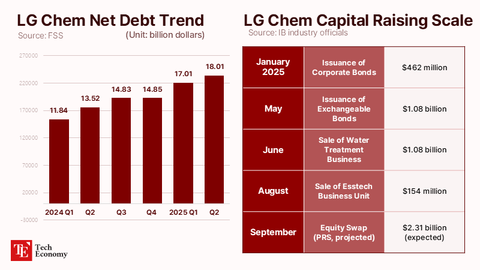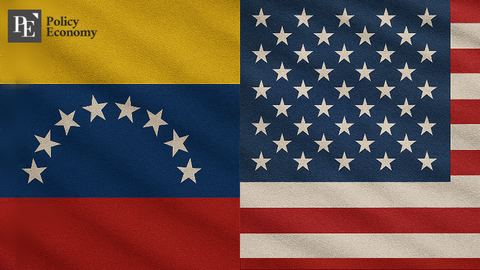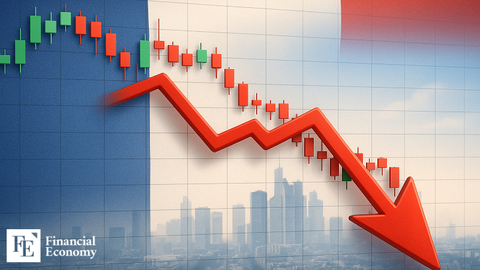Trump’s Economic Adviser Stephen Miran and the Perils of Tariff Fundamentalism Rooted in Extreme Economic Denial
Input
Modified
CEA Chair Stephen Miran’s Remarks Spark Controversy Critics Say He’s Trapped in a Bretton Woods–Era Mindset Pushing Theory Without Reflecting Structural Market Shifts

Stephen Miran, Chairman of the White House Council of Economic Advisers (CEA), is emerging as the key architect behind the Trump administration’s aggressive tariff strategy. A former hedge fund strategist and Treasury advisor, Miran drew widespread attention late last year when he released a report arguing that tariffs are the only viable solution to America’s twin deficits—its trade imbalance and fiscal shortfall. However, his position has drawn sharp criticism from economists and academics, many of whom argue that his proposals reflect a fundamental misunderstanding of the global economic system. Some go so far as to label his views an "extreme case of reality denial" that may ultimately be remembered as a cautionary tale in modern economic policymaking.
The Controversial ‘Miran Report’ and the Return of the Triffin Dilemma
On April 14 (local time), financial sector insiders reported growing belief on Wall Street that President Trump’s sweeping tariff policy has been inspired by the “Miran Report.” This document—“A User’s Guide to Restructuring the Global Trading System”—was authored by Stephen Miran, a member of the White House Council of Economic Advisers, and released in November 2023. It argues that the U.S. is facing a modern form of the Triffin Dilemma and that aggressive tariff strategies are necessary to overcome it.
Miran’s report reinterprets the Triffin Dilemma for today’s global economy, framing it as the root cause of America’s twin deficits—trade and fiscal. The original dilemma, first proposed in the 1960s, stated that for a currency to serve as a global reserve, the issuing country must provide liquidity (i.e., run trade deficits), but in doing so accumulates debt and undermines confidence in the currency.
According to Miran, the U.S. today bears the burden of maintaining the global financial system through persistent deficits, and he proposes that tariffs should be deployed not merely as protectionist tools but as strategic instruments to:
Correct market imbalances
Adjust foreign currency valuations
Rebuild U.S. manufacturing
And even boost tariff-based revenues.
To achieve these goals, Miran proposes the creation of a new global monetary agreement, dubbed the “Mar-a-Lago Accord,” referencing President Trump’s Florida resort and echoing the 1985 Plaza Accord. He advocates for coordinated dollar weakening through multilateral cooperation.
In the report, Miran argues that the U.S. must engineer significant appreciation of the euro, yen, and yuan to reduce its deficits. His radical proposal includes forcing foreign governments to buy 100-year U.S. Treasury bonds at near-zero interest rates. By doing so, countries would need to purchase dollars, maintaining the greenback’s global dominance despite reduced short-term appeal.
In a recent interview, Miran downplayed concerns over market turmoil following Trump’s tariff announcements, calling the reaction “overblown,” and claiming, “President Trump is laying the foundation for a tremendous trade deal that will benefit American workers.” He added that “dozens of countries are lining up to strike new agreements with us.”

Rising Consumer Burden and Increased Risk of Economic Slowdown
Academic and economic circles have fiercely criticized the Miran Report, calling its logic simplistic and ideologically driven. Experts argue that America’s twin deficits cannot be resolved through tariffs alone, as trade imbalances stem from complex global supply chains, consumer preferences, and corporate production strategies.
Economists also question Miran’s revival of the Triffin Dilemma, noting that it was relevant under the fixed exchange rate Bretton Woods system, which no longer exists. Today’s floating currency regime and more diversified global capital flows render the dilemma far less applicable. Additionally, U.S. trade has improved in recent years, especially through energy exports like shale gas.
Miran’s strategy is also seen as outdated in its focus on manufacturing, neglecting the reality that global trade is increasingly digital and services-based. For example, U.S. tech giants derive most of their profits from intellectual property and overseas subsidiaries, areas largely unaffected by tariffs.
The biggest concern is that tariffs ultimately increase consumer costs. Higher import taxes lead to price hikes, fueling inflation and weakening domestic consumption. In today’s inflation-sensitive climate, such policies may backfire by shrinking household purchasing power and slowing economic growth. Many now argue that Trump’s protectionism could become a boomerang that weakens U.S. competitiveness in the long run
Peddling a One-Size-Fits-All Theory While Ignoring Economic Reality
Some commentators have drawn parallels between Stephen Miran and Jang Ha-sung, the former South Korean presidential adviser known for championing income-led growth. Both, critics say, oversimplify economics, attempting to solve systemic problems through one-size-fits-all solutions—Miran with tariffs, and Jang with wage hikes.
Miran’s tariff-and-currency prescription is increasingly being seen as not just theoretically flawed but detached from economic reality. His proposal for a Mar-a-Lago Accord to coordinate currency realignments is also facing skepticism. While the intent to correct imbalances is noted, today’s global economy is vastly more fragmented and complex than in 1985, when the Plaza Accord was struck.
It’s unclear whether major trade partners like China, the EU, or Japan would acquiesce to the U.S.’s unilateral demands, especially amid ongoing U.S.–China tensions and U.S.–EU trade frictions. The assumption that such coordination is still politically and economically feasible is seen as highly unrealistic.
Despite mounting criticism, Miran remains unwavering. Like Jang, who argued wage increases alone could spur economic growth, Miran appears anchored in America-centric thinking and blind to broader macroeconomic implications. Critics warn that both men use policy as a political tool for short-term impact, rather than ensuring sustainable, long-term economic governance.





















